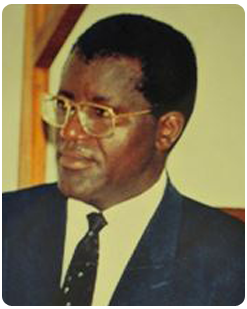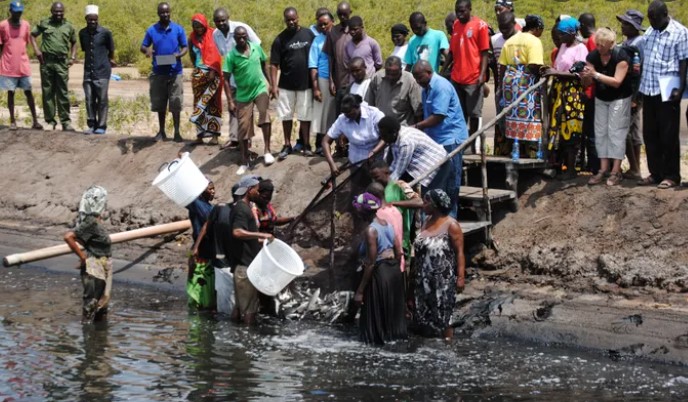Our history
Background
Kenya Marine and Fisheries research institute was established in 1979 as a result of an enactment of the Science and Technology (Amendment) Act and was charged with the responsibility of conducting research and making management recommendations essential for the national exploitation of living and non-living aquatic resources in the ocean waters, as well as the fresh water in the hinterland. Managed by a Board of Management, the institute undertook research activities in close consultation with and under the general supervision of the National Council for Science and Technology. The research programme of the Institute was then divided into two groups, namely marine and freshwater research sectors. It was noticed that in addition to the long-term established objectives of providing a scientific basis for the management of natural resources, the institute should also be prepared to respond to the rapid rising public interest in the preservation of environmental quality problems that are likely to develop in the inshore waters, including the estuaries and the areas whereby there is an increase in human activities with a likelihood of affecting the fisheries.
Mr. Samuel Alela 1979-1990
 On this basis, the institute embarked on expanding the training programme to provide the staff necessary skills for the institute to expand its fisheries work, oceanography, aquaculture, limnology, and environmental studies in marine and freshwater. In deciding on the expansion, it was recognized that an active programme in aquaculture especially the declining species in L. Victoria and associated rivers could not be undertaken without adequate facilities. It was therefore decided to construct the Sangoro Sub-station to carry out studies on the anadromous species of Lake Victoria.
On this basis, the institute embarked on expanding the training programme to provide the staff necessary skills for the institute to expand its fisheries work, oceanography, aquaculture, limnology, and environmental studies in marine and freshwater. In deciding on the expansion, it was recognized that an active programme in aquaculture especially the declining species in L. Victoria and associated rivers could not be undertaken without adequate facilities. It was therefore decided to construct the Sangoro Sub-station to carry out studies on the anadromous species of Lake Victoria.It was also decided to equip Kisumu and Turkana Laboratories with adequate research vessels. Two vessels were purchased and one was put into service during the year. These were the 50ft. R.V. Utafiti which is based in Kisumu and a 35ft. vessel fitted with a trawl winch for Lake Turkana Laboratory. In principle, it was agreed that the institute needed an ocean-going vessel basically a stern trawler designed to have the capability for both fisheries and oceanography with laboratory facilities for scientists on board.
The Marine Sector - Mombasa
The main objective of the marine sector situated at Mombasa was to collect and consolidate all available marine fishery data resources, which provided information for development. In addition, Mombasa Laboratory undertook research programs that led to the understanding of most of the economically important species which help in the biological monitoring of their stock characteristics for proper management, conservation, and conducting exploratory and experimental surveys. With the realization of the importance of environmental factors and their effects on living resources, the Mombasa Laboratory also carried out research programs on the psycho-chemical parameters essential for the planned conservation and management.
Freshwater section - Kisumu
The freshwater section now centered at Kisumu prior to 1979 had research programs directed towards the biological studies of fishes in Lake Victoria. Little work was carried out in Lake Turkana, Lake Naivasha, and Lake Baringo.
During the past years, Kenya had witnessed the greatest dam construction for hydroelectric production. Although the resulting reservoirs have led to increased fishing activities, especially along the Tana River the effects of dams on the river ecology downstream are still not known. A riverine laboratory was established at Sangoro on river Sondu geared towards establishing breeding techniques for the most important species. After completion, the institute laboratory at Ferguson Gulf of Lake Turkana would take care of other Rift Valley lakes with Substations at lake Baringo and Naivasha.
Dr. Ezekiel Okemwa PhD 1990-2000
 Dr. Ezekiel Okemwa became the Director of KMFRI after the founder Director Mr. Allela got transferred to head KIPPO in 1990. The institute continued to undertake and expand research projects under the new impetus of international and local institutional collaboration, particularly in marine research. Funding was made available through the Kenya Belgium Project (KBP) and KMFRI from European Economic Community (EEC). This new funding arrangement enabled the biological chemical and physical oceanographic projects to continue. The University of Nairobi teamed up with KMFRI on a new fishery project under the same fund. Pollution studies received fresh input when KMFRI was selected as the regional representative of the East African regional sea programme and funds were allocated for pollution studies.
Dr. Ezekiel Okemwa became the Director of KMFRI after the founder Director Mr. Allela got transferred to head KIPPO in 1990. The institute continued to undertake and expand research projects under the new impetus of international and local institutional collaboration, particularly in marine research. Funding was made available through the Kenya Belgium Project (KBP) and KMFRI from European Economic Community (EEC). This new funding arrangement enabled the biological chemical and physical oceanographic projects to continue. The University of Nairobi teamed up with KMFRI on a new fishery project under the same fund. Pollution studies received fresh input when KMFRI was selected as the regional representative of the East African regional sea programme and funds were allocated for pollution studies.Most of the projects initiated under this fresh funding were geared towards ecological studies and aimed at improving our present knowledge of the functioning of various ecosystems along the Kenyan Coast. Like in the previous year, most of the work focused on the Southern Kenyan Coast. More attention was paid to Gazi creek, where the environmental data collected would be used for ecological modeling of the creek. Kilindini and Tudor Creeks’ work continued on pollution, hydrography, and seasonal variation of physical and chemical parameters.
Monitoring of fish stock for sustainable utilization and management
Fishery programmes were oriented toward a better understanding of the problem as relates to the development of fisheries and monitoring of fish stocks for sustainable utilization and proper management. The oyster program continued to be important for the dissemination of aquaculture techniques to local fisheries entrepreneurs. Fishermen were encouraged to adopt this low-cost technique for shallow coastal areas. Action was taken to merge certain projects in KBP-EEC, Delta Institute for marine sciences, and KMFRI so that fresh inputs could be aimed at mangrove ecosystems, nutrient fluxes, and other fishery-oriented environmental parameters.
Kenya – Dutch Cooperation projects
Offshore research focusing on the Kenyan continental shelf, for the first time, showed a remarkable international collaboration. A joint proposal between KMFRI researchers and counterparts in the Netherlands at Delta Institute and the Netherlands Marine Research Foundation (SOZ), was drafted, submitted to the Netherlands government, and approved for funding under the Kenya-Dutch Cooperation and as component programs within the Indian Ocean Programme 1992-1993. The projects under Kenya-Dutch cooperation were aimed at studying the impact of monsoon on the Kenyan ecosystems aboard the Netherlands Research Vessel R.V Tryo. A land-based programme and pre-cruise training were also approved for funding. The expedition by R.V Tyro and the training was scheduled to take place in Kenya in June – July 1992 and Nov – Dec 1992. Kisumu laboratory continued to be the center for freshwater studies. Research efforts on Nile perch and Oreochromis spp continued. Significant progress was made in developing a new method of collecting fishery data from various landing sites.
Dr. Johnson Kazungu PhD 2000-2014
 During this period the institute experienced major infrastructural development like the construction of a conference facility and also additional office housing for the SWIOF project. Also, the Marine and Resource centre building was initiated during this period.
During this period the institute experienced major infrastructural development like the construction of a conference facility and also additional office housing for the SWIOF project. Also, the Marine and Resource centre building was initiated during this period.The 5-year research strategic plan of the Kenya Marine and Fisheries Research Institute was an outcome of a consultative workshop held at Mombasa and Kisumu in 1999 to chart the way forward for research in both coastal and inland waters. The strategy is partly based on the approved 2010 research strategic document that mapped out six key programs namely; the fisheries research programme, the aquaculture research programme, the environmental and ecological research programme, the natural products research programme, the information and database management programme, and the socio-economic research programme. In developing the strategic vision for different programs, the institute was guided by the policies spelt in National Development Plans and sessional papers as well as the need of specific stakeholders. The strategy also took cognizant of emerging sectoral issues in Kenya and abroad.








